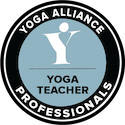Why do we focus on our breath during a yoga practice? Apart from the obvious reason that it keeps us alive.
Breath work, called pranayama, is a key element of yoga. ‘Prana’ means life energy and ‘yama’ means control. Therefore pranayama is breathing exercises and patterns.
The Asanas, or poses, are just a small part of what makes up the practice of yoga.
At the start of a yoga practice we bring our focus to the breath. This allows us to connect with our body and its subtle energy within, it also has a biological effect on our mental, emotional, and physical state.
Connecting to your breath is a method for being present. Bringing focus to the inhale and exhale, allows you to be present; it allows you to focus on the here and now. By focussing on the breath it becomes a form of meditation.
Breathing consciously activates a different part of the brain. Unconscious breathing (every day breathing) is controlled by the medulla oblongata within the brain stem. Conscious breathing comes from the cerebral cortex, sending impulses that have a relaxing and balancing effect on emotions.
The definition of yoga is “to yoke, to bring together into union”. Yoga practitioners come to their mat to still their mind and stretch their bodies. This is done through a combination of breath work and movement, being aware when it’s time to control and when to let go.
The postures in yoga are a means to connect with and open our energy channels, or nadis of which there are 72,000 throughout the body. There are 3 main nadis, Ida (in the left nostril, calming and cooling effect), Pingala (right nostril, a heating effect) and Sushumna (the central channel associated with balance).
Did you know that over the course of a day, the left and right nostrils alternate which one is dominant. One nostril will be dominant based on your physical, emotional and mental state. As the dominant nostril changes, the Sushumna is activated for a couple of minutes. In Yoga we try to activate Sushumna for a longer period, by allowing the flow evenly through both nostrils. This also increases our prana or vital life force energy that is flowing through our bodies.
Prana is part of the physical practice of yoga. This deep and intentional breathing which goes hand in hand with the flow and postures. It removed energetic blockages and purifies the body including the prana flow. To increase the prana the breath has to be deep and full.
If you practice yoga without the deep breath, then the body will not feel the full benefits. Breathing allows the movement of energy, and thus helps the body to relax. A stiff body that attempts to shape itself into a different pose will likely injure itself. But when you breath into a pose, the body deeply, we open our bodies and are more in tune, this helps us avoid injury.
A yoga practice without breath awareness will give you a good workout, however yoga is intended to offer more.
Breathing deeply allows us to transform and rejuvenate.
Why not use your yoga mat as the start of your journey.







